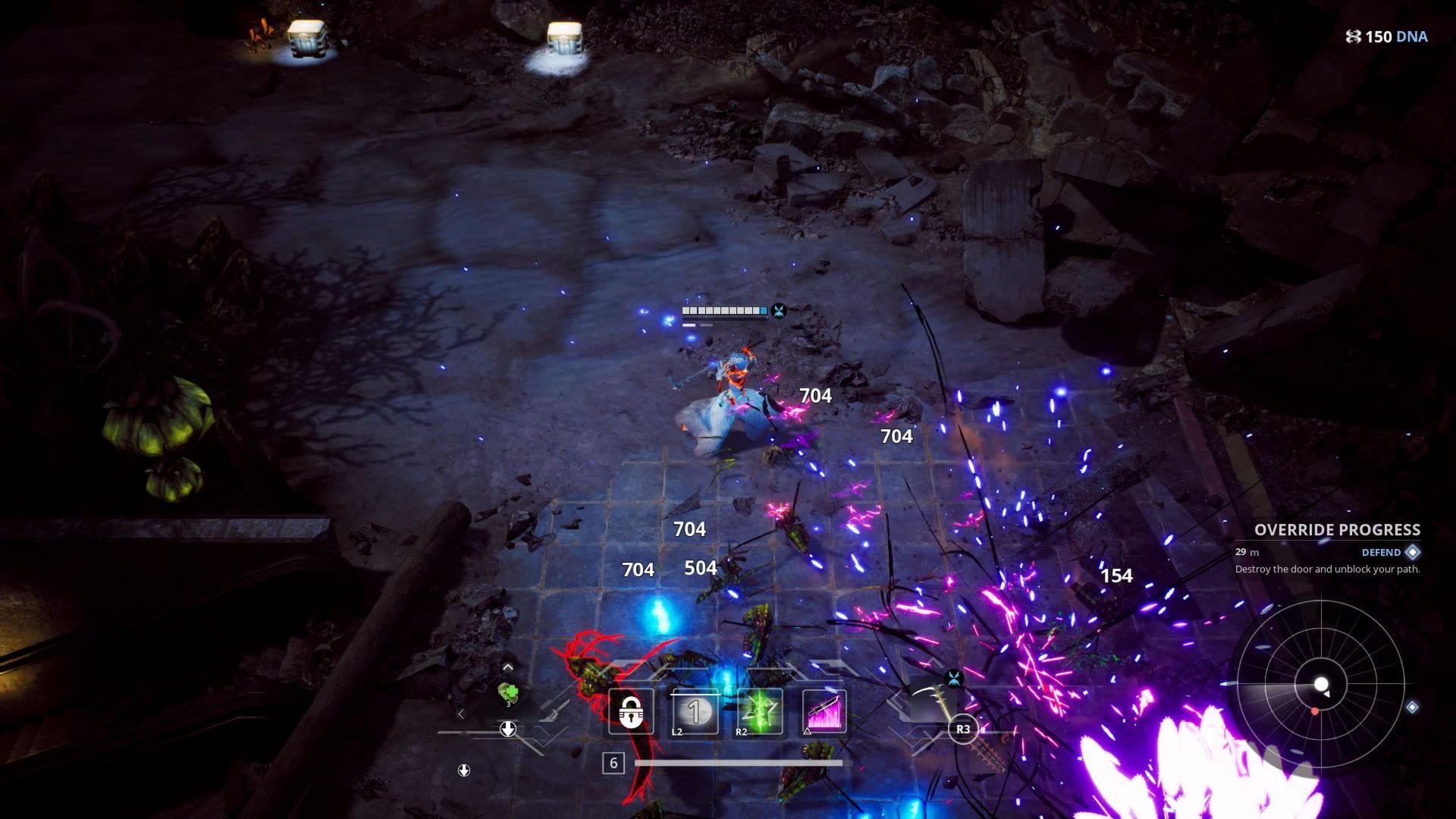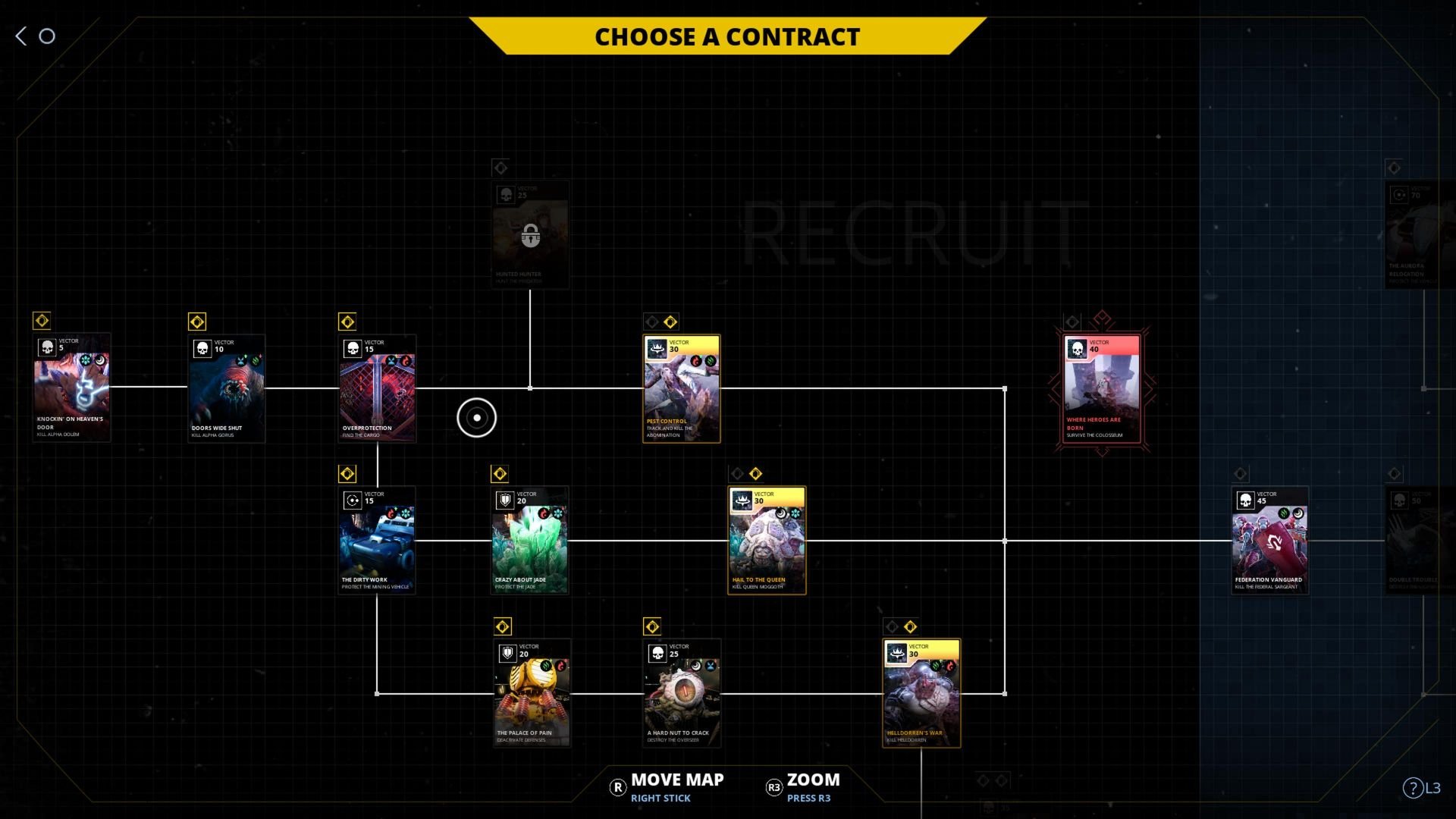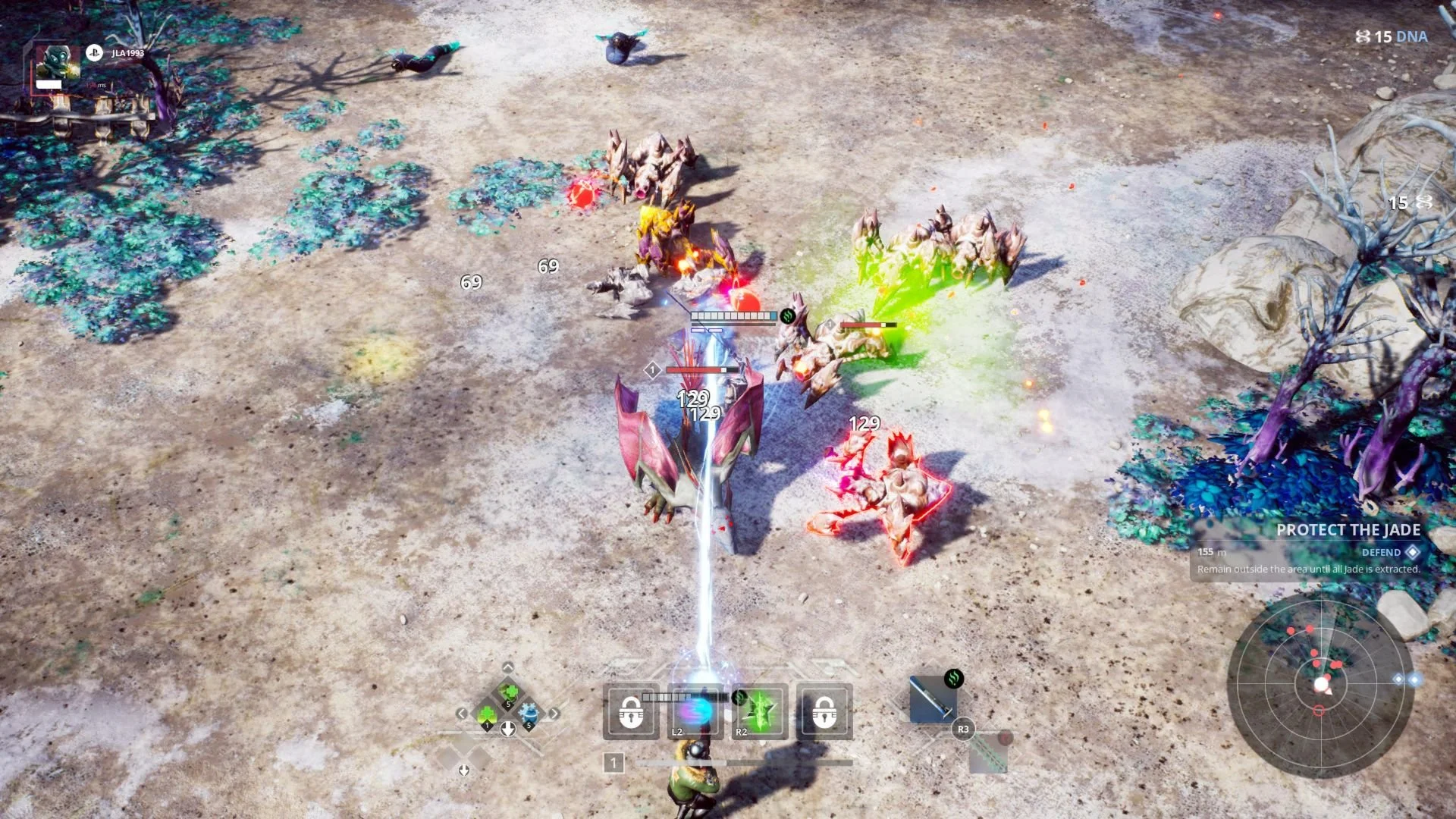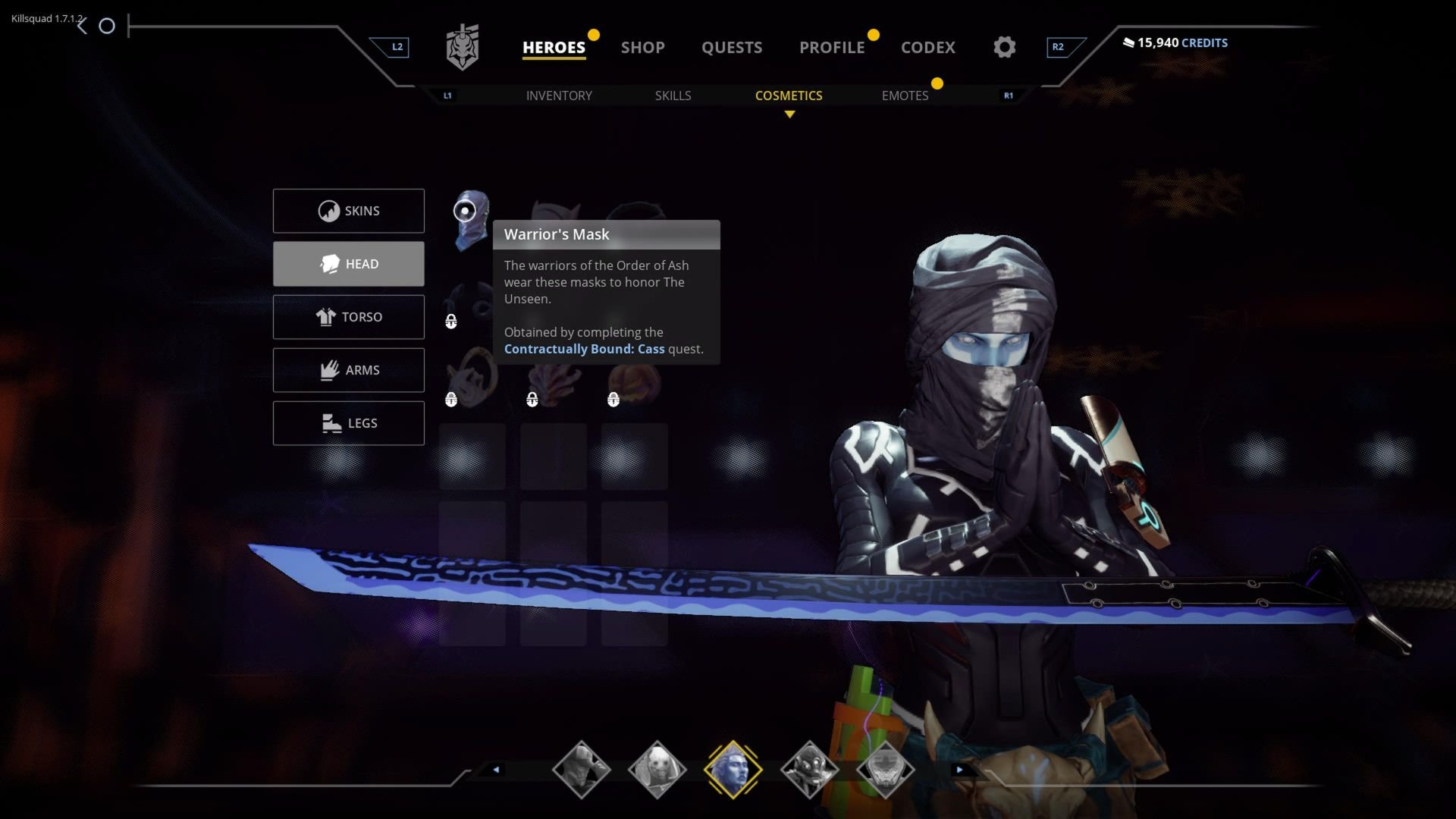Bounty. Kill. Loot. Repeat.
There is something satisfying about a good gameplay loop. It's a rinse-and-repeat structure that fuels countless games across numerous genres. However, sometimes a gameplay loop is satisfying because of the connections to its story or characters, making its moments memorable and stand out. A loop can also entertain its player because of the loot you earn from it, causing your progression to mean something in the end. While Killsquad has moments that certainly do entertain, it fundamentally suffers from a lack of making anything you do feel memorable.
Killsquad launched in early access back in 2019, allowing PC players to experience its characters, world, and gameplay as the title grew into what would eventually release in the fall of 2021. With the full release being available on PC for the past two years, development shifted to bring Killsquad to PlayStation. While the title features crossplay between both PC and PlayStation users, the game’s limited focus to just offering online co-op and not any sort of local option is certainly a bummer.
Killsquad sees you choose from five distinct mercenaries, a collection of ragtag bounty hunters that feature a wide range of skills, personalities, and abilities. Your handler is a woman named ‘Momma’, who will guide you on your contracts, providing a one-sided conversation with giving you the bare minimum spiel on the context of the mission. Those hoping for even the tiniest bit of story will be disappointed here as Killsquad doesn’t provide much of anything other than brief backstories for its cast, a few quips, some conversations from NPCs, and Momma’s basic intros. I do have to commend the team for at least constructing some sort of lore and basis for its world and characters, even if I feel the game does nothing to showcase it.
While each mission has a simple write-up, they don’t amount to much more than being told you have the go-ahead to collect a bounty or something else that sends you to one of the few locations you’ll actually visit. And honestly, I don’t see players reading those mission briefings whatsoever and just jumping into the action with their friends.
With Killsquad not having even a sliver of story or presentation for its characters, it’s hard to really feel invested in what you’re doing here and who you’re playing as. It causes a lack of connection to your character and what you’re even working towards. Say what you will about most live service or co-op games and what some tend to offer as a story, but Killsquad needed something to make its players invested here, especially in a sea of titles all wanting your time, money, and attention.
Missions tend to be structured around a bounty; however, a few will see you shift your focus to protecting a truck or mining away at crystals. These additional options provide a nice change of pace from just hacking or shooting away at a bullet-sponge boss that doesn’t know when to quit. While missions are fairly short, usually ranging anywhere from 10 to 15 minutes, you can opt to explore off the beaten path to find additional chests, a robotic shopkeeper, or items that you may miss should you simply b-line it for the boss area, a direction that is provided on the game’s radar. I’ll also note that Killsquad doesn’t provide a map whatsoever, but I rarely felt like I was getting lost.
Each of the game’s five mercenaries do feel distinct. While their designs may not exactly set the world on fire to really stand out, the variety between them is still very much welcomed. From the top, we have the simply-named Troy. As a smuggler from the planet Nass, this superstitious gambler has a particular skill with a revolver. He can also clone himself and cause confusion to his enemies. Troy is the basic ranged fighter and is a solid choice if you are looking to keep your distance. Next up is Kosmo, who wields a very large hammer. While no one has seen his true face, it’s likely that no one has escaped his sights long enough to even relay that information.
The bulk of my time with Killsquad was with Cassandra, the great master of the Order of Ash. Her melee skills with a blade make her a devastating force to be reckoned with. Cass can teleport to her foe as well as turn invisible, making her a worthy opponent. Zero is your support class, packing a rifle as well as the ability to toss out some much-needed heals. Zero was built on Makkin-IV as a combat medical unit, intended to be part of the Feds, that is until he was hacked by the Uprising and given free will, with some lingering side effects. Lastly is Ekaar, the prodigy. Known to himself as the “superior being”, Ekaar is a top engineer, gaining notoriety and fame on his home planet of Kre-Ishlu. After achieving what he could there, he decided to venture out into space and take his technical know-how on the road and make a bit of coin.
Killsquad’s gameplay is your typical twin-stick shooter with movement on the left stick and your central aiming on the right. While Cass and Kosmo are melee focused, you can either use the right stick for combat or mash away at X to get the job done. Attacks, abilities, and your ultimate skills all have their respective buttons with Triangle being your ultimate attack and L2, R1, and R2 being your special skills. Items are equipped to your D-pad and are pretty easy to pull off in the middle of combat. Dodge is mapped to L1, even if I feel that O could have been the better default.
While you can swap to a new character in the lobby at any time, they’ll start right from level one, requiring you to replay missions from the very start. Considering the number of missions you'll need to repeat to grind your existing character to be leveled appropriately for the next mission, let alone having to earn the currency to outfit yourself properly, you may not want to grind away at yet another character unless you feel their gameplay style is worth exploring the same few stages that tend to repeat over and over again. You’ll also have to grind away at levels to ensure your gear is top-notch and ready for combat. And with no story or anything to really take your attention away from the grind, the repetition can certainly sink in.
Each mission you'll take on requires that your equipment level is appropriate to its challenge. Similar to Destiny, you'll have a power level that is the combination total of your gear. Here, Killsquad uses the term Vector Level. This is the average of your weapon, support, and prototype equipment. As you complete contracts, you'll earn gear as well as credits. And to be honest, I found better gear in the shop than most of what was part of any mission reward. And, I’ll also stress that you don’t normally get gear as random drops as you receive predetermined loot as a reward for specific missions. While you can find the odd weapon here and there in chests, you cannot do anything with it until you return to the mission prep lobby. While this does reduce the amount of stopping to check what you’ve gained, especially within a group of randoms, you never get that surprise of having something really cool that you can instantly take advantage of.
Gear will have a variety of perks as well as its technical use as part of your kit. Weapons are straightforward and have a wide range of elemental types such as kinetic, toxic, and fire traits. Each mission will have an element that it recommends as well as one that it does not. One nitpick I have with weapons is that those recommendations are tied to the elemental effect of your weapon. With about a half dozen elements to keep track of, you technically would want to have a weapon for each element to benefit your mission compatibility. And since weapons are fairly expensive to purchase and upgrade, let alone keeping up with the rising Vector requirements, having a weapon for every task is a nightmare of a grind.
When it comes to your Support gear, it handles effects such as additional health or resistance to elements, as well as assisting certain skills for each character. Prototype items aid you in earning more experience, increasing the amount of loot that is dropped, to reducing the amount of damage you receive. Each gear item is also color-coded for its rarity, such as commons and rares. You’ll also be able to equip gadgets as you unlock the spaces to equip them such as having access to numerous healing items, elemental potions to reduce their effect on you, and producing a series of static spheres that float around you and deal damage.
To change up the look of your character, each merc has a series of customizable options to change the look of key parts of your character. From gloves to hats, to entire skins, which you'll have a few to choose from right from the get-go, these items are a bit harder to acquire. Some can be purchased for a high credit price while others are earned through reputation ranks with each of the game’s four factions. These factions can be leveled up by purchasing items at the shop, defeating federation forces and corrupted enemies, as well as taking part in the Colosseum challenges. Faction upgrades also vary between each of them such as granting you tokens for purchasing specific cosmetic items to discounting prices in the shop. And with four factions to level up, you’ll have a great deal to work towards.
One notable thing that Killsquad does during its missions is by presenting your skills through a MOBA-like level system. As you level up, from one to ten, you'll unlock your abilities. You'll start each mission at level one and as you level up, you'll have access to those abilities. While this is an interesting idea on paper, you still end up following the same path. Each skill is unlocked at levels 2, 4, 6, 8, and 10 with some being your core skills and others being the variants of them you have equipped. It’s a shame there wasn’t some sort of randomized perk system between those levels to alter those skills in a way where you could shake up your build from mission to mission. While this system doesn’t dramatically suffocate those abilities until you reach the appropriate level, it feels like a system that is halfway there to being something engaging and worth its inclusion here.
Combat itself is fairly fast-paced with a wide use of skills, dodges, and ultimate attacks. However, there is very little here that feels weighted, and swinging at enemies with Cass’s blades doesn't pack the punch or tactile feel that they should. The same goes with any of the ranged classes as your bullets or lasers don’t really feel like they are hitting your target visually. It's also a tad bizarre that weapons don't have visually striking differences, regardless of their trait. I also felt that the Dual Sense vibration was very minimal here and didn’t quite match the overall action or intensity. The moment-to-moment gameplay can feel decent as you are dodging away from attacks and pulling off your special skills, it’s mainly the standard attacks that could use a bit more oomph to their strikes or blasts.
As you approach the required Vector level to take on missions, you rarely feel a true sense of power unless you grind away to be a tad over-prepared. You certainly feel it jumping back into lower-level missions, but apart from tinkering with your skills to find the build you want, progression can feel a tad stagnated after a while, especially as you’ll reach the extent of the skill tree fairly early into the game’s progress. While you can create separate builds to have at the ready, your points are not reset on each subsequent build, which feels designed to force a massive amount of level grind to prepare each of the 5 slots. While not a major issue, the game would never alert me that I had skill points to spend, despite all new items presented with a yellow dot notification that something was available.
While standard mobs are fairly easy to take down, your journey as a bounty hunter is often clashing against large imposing creatures and monstrous titans that can certainly drain your health bar in no time. For as generic as some designs can be, many of the game’s core bosses are fantastic. An early boss, Queen Moggoth, was a damn fun time with mechanics and attacks that felt engaging to fight. While not every boss is a winner, with a few that are a pain in the ass when playing solo, I was still impressed with the level of creativity developer Novarama displayed here.
As you complete missions and return back to the main lobby, you can check out various quests that you’ve completed. These reward you with credits, resources, and outfits. While some quests are as simple as taking on contracts as certain characters, some are far more involved. The resources you earn are used to level up your weapons and gear to add effects like your basic attack gaining a 13% chance to inflict a critical strike, to Cass’s teleport shuriken seeing its damage increased by %22. These upgrades are static to the item, meaning that you are not choosing one upgrade from the other. Since weapons can often influence your abilities, choosing an arsenal that reflects the abilities you’ve chosen on their skill tree is crucial.
While Killsquad’s level design isn’t anything special, I do like the variety across each environment. You will see a few areas revisited a bit more than I’d like, but the increase in enemy variety and quantity when playing online, does go a long way to reduce the repetition and grind. Levels are colorful, and fairly well-detailed, even if pop-in when loading into a new area is extremely noticeable. As far as the game’s technical performance, the post-mission screen constantly stuttered for me and my co-op partner, and there were a few missions where we got stuck in the geometry, but that occurrence was extremely rare.
While the bulk of my playthrough was solo, I eventually found a group of players to proceed through a large chunk of the later missions. While playing through the game is certainly possible as a solo player, even despite the lack of being able to be revived, Killsquad is considerably better when you have a full team of four, especially when you have each slot filled by a different class. The kinetic energy on display, when you have a whole crew, elevates this game considerably and makes it something I can fully recommend, even at full price. If you are looking to Killsquad with the intention of playing it solo, expect the game to feel like some missions are dragging on in a world that can often feel noticeably empty.
While Killsquad certainly has its share of shortcomings, I still found its gameplay to succeed in the end, offering a pretty enjoyable game when taking on its contracts with other players. Without a story or something to connect you to its world, your mileage may vary on whether its gameplay and customization are enough to keep you playing. While I enjoy the variety of the characters, I still don’t feel that I know who the characters are apart from their design and core function. The abilities and flashy effects are certainly enjoyable and provide a solid few hours to sink into its missions, but if Killsquad is to return, then personally, I need something to connect me to its story and cast of mercenaries, giving me something to achieve apart from a slightly different gun that makes the numbers go up.
Developer - Novarama. Publisher - Novarama. Released - July 20th, 2023. Available On - PS4, PS5, Windows. Rated - (T) - Fantasy Violence, Language, Mild Blood. Platform Reviewed - PS5 through a code for the PS4 version. Review Access - A review code was provided by the PR/publisher for the purpose of this review.



















Jeff is the original founder of Analog Stick Gaming. His favorite games include The Witcher III, the Mass Effect Trilogy, Hi-Fi Rush, Stellar Blade, Hellbade: Senua’s Sacrifice, and the Legend of Heroes series, especially Trails of Cold Steel III & IV.